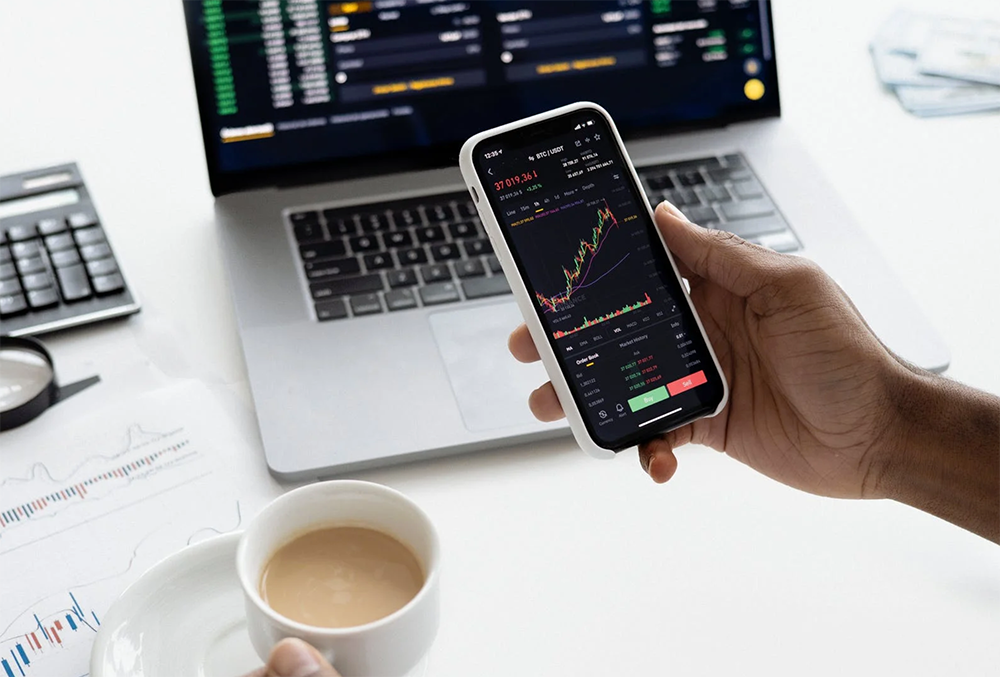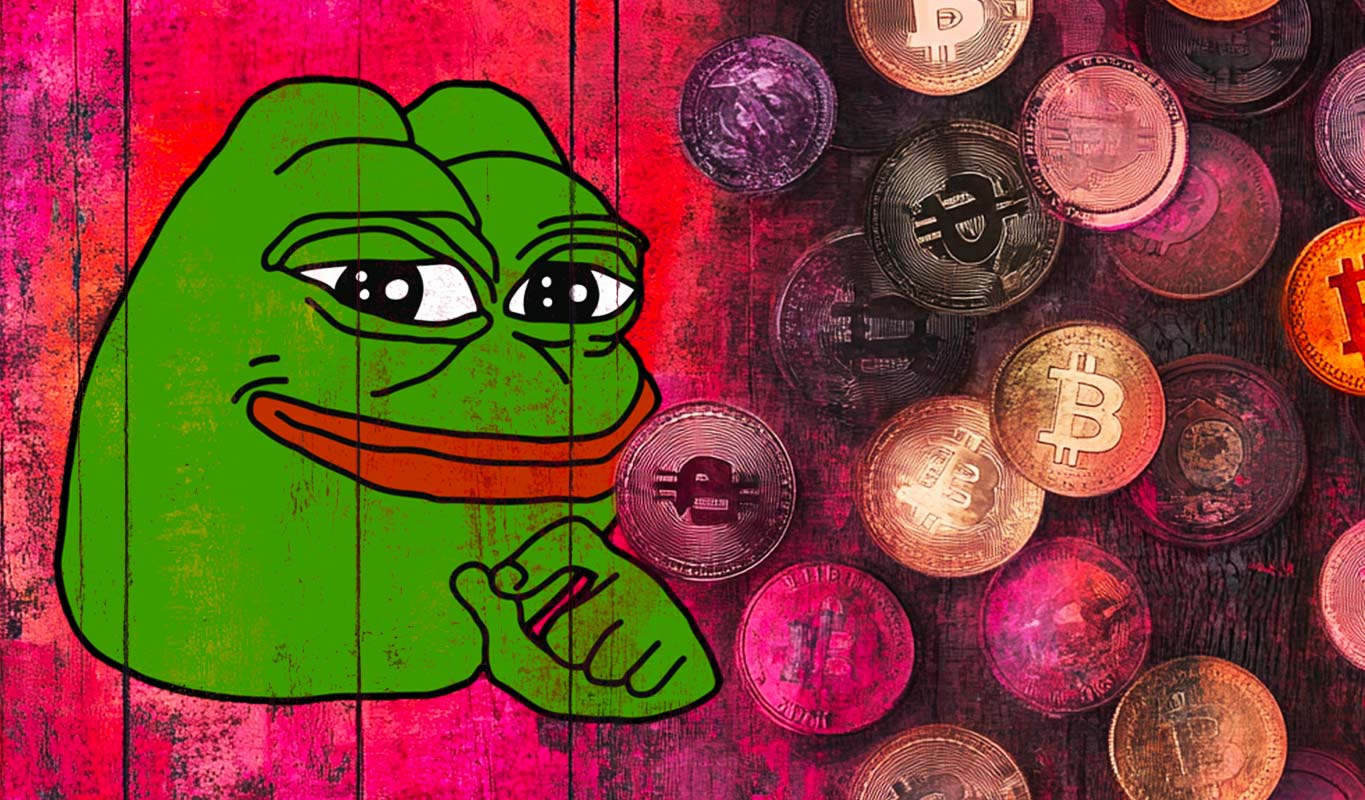
During times of economic uncertainty, wealth is best put into investments like hard assets. Precious metals like gold have become the choice among investors who want a good hedge against the turmoil. Another valuable asset investors turn to is real estate. Owning land or property is an asset that tends to appreciate over time. Now there is another option that some investors consider, which is cryptocurrency like Bitcoin (BTC). It is a new asset class, in contrast to the traditional financial market, and offers many of the features of hard assets and more.
Which of the three offers the best feature of a hedge against any economic uncertainty? It is important to look at the track record of each asset. Perhaps real estate and gold have been tried and proven, while Bitcoin is still considered very new. Gold and real estate (or property) has been in demand since the dawn of civilization. Bitcoin has only been in existence since 2009.
There is always a demand for real estate for land development and housing. Gold in history, has been a great store of value since ancient times. Bitcoin has just emerged in the Digital Age following the financial crisis of 2008. Are gold and real estate the best options to hedge against uncertainty, or has Bitcoin become the new hedge asset?
When it comes to the economy, fiscal policy directed by the government (e.g. Federal Reserves) from the macroeconomic level is aimed to stimulate growth and offset stagnation. The government, through its Central Bank can print more currency as a means of stimulating the economy. In the short run it can lead to growth, as more money is in circulation, finding its way to banks who can lend the money at lower rates. The problem is that, in the long run, it creates inflation since the markets cannot continue to meet the growing demands when there is more money in circulation.
When inflation becomes a problem, the government will have to either decrease spending or increase interest rates. Both would have the same effect, which is slowing down the economy. In an ideal macro-environment, such policies will work because it slows things down when things are fast and moving. If you have a healthy economy, with a balance in employment and GDP figures, slowing down the economy helps to keep the supply in check with demand. It will also allow banks to earn back money from loans and attract investors to government bonds from higher interest rates.
The problem is that inflation diminishes the spending power of consumers over time. The higher cost of borrowing money also affects businesses from expanding, thus decreasing opportunities for more growth. This is when economic uncertainty hits, as companies also have to decide whether to keep their reserves in cash or to put them into investments (e.g. bonds, stocks, cryptocurrency). For investors, it is about assessing risk-on risk-off assets as higher interest rates affect the market. During situations like this, investors will sell off higher-risk assets like technology stocks and even cryptocurrency (including Bitcoin).
Where do Bitcoin, gold, and real estate fall under? These are valuable assets based on their price. Bitcoin is becoming popular due to its potential as a new store of value and a lot more. Gold has been valuable and gradually appreciating. Real estate has always been in high demand because it is not just a commodity but a necessity that can yield high returns.
You can sell gold for jewelry, electronic components, and collectibles. Real estate can be sold as property for buildings and housing. Bitcoin is perhaps the odd one here because it is not tangible and is a digital asset. Gold and real estate are perhaps less risky (based on the narrative) compared to something novel like Bitcoin.

Supporters of Bitcoin or Bitcoin Maximalists refer to the asset as the digital version of gold (i.e. “Digital Gold”). This is because they view it as an excellent store of value, safe haven asset, hedge against inflation, direct peer-to-peer (P2P) payment system, and frictionless transfer of value. It has the characteristics of both currency and value asset, so it can be multipurpose. However, it is not a tangible asset but a piece of software. It is purely digital, based on computer code that requires a device to run on (e.g. smartphone, laptop, PC) and a network of participants to function.
Other important characteristics of Bitcoin are decentralization, immutability, transparency, portability, divisibility, scarcity, and censorship resistance. Bitcoin runs on a decentralized network that requires consensus among participants called nodes in order to process transactions. It is not controlled by a single entity or authority, therefore, it cannot be directly manipulated. Transactions are packaged into blocks that are recorded on a decentralized database called a blockchain. The blockchain stores the data permanently, and it cannot be overturned, modified, or deleted. Participants, called miners, are then rewarded in BTC for helping to validate transactions. BTC is also scarce because the total maximum supply will only be 21 million based on the software’s code.

Bitcoin has appreciated in value tremendously since it was first released in 2009. If you have been holding BTC since it was first listed, you would be up on your ROI by 22,439.42% (data obtained from CMC from 5/30/2022 BTC = $30,628.13) if you had purchased BTC when it was worth $135.88694. That beats just about any known asset in history that has been listed in the market (both traditional and crypto). Rising inflation also seems to correlate with Bitcoin price increases since 2009.
This has been unprecedented, but it also opens up BTC to criticism as a bubble that will eventually burst. Bitcoin price has, in fact fallen many times before, only to recover and reach higher price levels. This has been happening between 2009 and 2022, with the most recent one occurring in May of 2022. Bitcoin critic and economist Nouriel Roubini calls Bitcoin as a currency a misnomer due to its volatility, and this does not make it a good store of value.
In terms of market performance, BTC has been been consistently increasing in value over time. During a recent episode of Anthony Pompliano’s Best Business Show (Feb. 2, 2022), the CAGR of Bitcoin in the past 10 years was 140.80%, which is far better than gold (0.39%) and the S&P 500 (12.93%). This is because there is a strong network behind Bitcoin, who have accumulated and HODL (a term for holding the asset — Hold On For Dear Life). This can be shown from on-chain analysis, which reveals that the number of Bitcoin wallet addresses has increased to 200 million (and growing), with at least 106 million addresses owning BTC. Another sign of this is that BTC supply is becoming illiquid, as more people are holding BTC and not selling it on digital exchanges.
You can make an argument that gold (chemical symbol AU) is the most precious metal in the history of mankind. Since early times, gold has been valued in ornaments, jewelry, and as a medium for exchange in trade. Even religious books like the bible mention gold as a precious and desirable object that is worth a lot in value. This is because it is rare and not very easy to produce, requiring intensive resources to extract and process.
Rich deposits of gold discovered in the new world led to the conquest of the Americas by the Spanish conquistadors. The Gold Rush in the US-led to expansion and development in the western American frontier. Gold is also becoming a conflict mineral in Africa due to its high demand and value. This is what makes gold highly valued for storing wealth.

Gold is not just used to store value, it is also used in the electronics, jewelry, fashion, and manufacturing industries. Many electronic components use gold because it does not rust or tarnish the same way as other materials. It is also very sought after among jewelers since there is always a high demand for it in jewelry items like rings, earrings, necklaces, and bracelets, among others. The fashion industry also makes use of gold-based accessories and jewelry for styling. In manufacturing, gold has been used for electrical contacts and wiring because of its good conductive properties.
Since gold is a tangible product, you can possess and own it. You just have to provide storage space in order to hold vast quantities of gold. Many owners keep their gold secured by third-party vaults like asset custodians or banks. There are also those who keep their gold in a safe box at home. Many people also possess small quantities of gold in their possession, ranging from tiny nuggets to jewelry. Real gold that has been verified, fetches a high value in the market, so it can be exchanged for cash in places like pawnshops.
Investors can also choose to have exposure to gold without actually owning it in its physical form. Prices began to surge upward in 2004, after the first gold ETFs were released on March 8, 2003. The price of gold jumped to $1,600 an ounce after 2010, from about $363.83 per ounce in 2003. ETFs allow investors to have access to physical gold without actually owning the hard asset. This opened up the market to new investment instruments that led to more increases in gold prices.
The historic price of gold (per ounce) in the market (since it was first listed) has shown a slow but gradual increase. Gold hit the $2,000 price level in mid-2020 during the start of the COVID-19 crisis. Gold prices hit record highs during Russia’s invasion of Ukraine. At the same time, rising inflation around the world made gold an alluring safe-haven asset. There was a further increase in prices that took gold above $2,000 per ounce until it corrected and dipped below $2,000 in May of 2022.
Land and property are certain hard assets that have proven their value grows the most over time. There is always a demand for land in order to develop. This is driven by the demand for housing and construction as cities expand and more people require a place to live. Those who have land for development or property for renting or selling benefit the most. This is because the benefits of real estate are realized over a period of time, as the larger the property size the greater its returns. Value is also determined by location, market value, and type of development.
Of the three assets, real estate is the most variable since it depends on many factors. Unlike the price of BTC or an ounce of gold, there is no standard real estate price per square foot of land around the world. Land prices, for example differ per region and by country. The one thing that is certain is that real estate fetches higher prices overall, the larger the size of the property. It might be cheaper in some places than others due to location. You would expect a higher valuation in a commercial or residential location compared to a place where there are less developments.
Real estate is an important indicator of the health of an economy. When the property market is naturally growing and expanding, the real estate value increases. At the same time, people can afford to mortgage property, be it a house or an apartment because wages are caught up with economic growth. This is a good time to sell a property if you are in the market, but even better to hold that property and wait for its value to grow further. This is due to inflation.
If we take California as an example, real estate prices have really surged over the last three decades. The housing price index in the state has increased to 833.34 in Q4 of 2021. Compare to Q4 of the year 2000, when the price index was just 285.72. If you purchased the property back then, in Q4 2021, your investment would be up by 191.66% (2.9x). Property values in California increased due to higher demand since the state has a very large population. At the same time cumulative inflation increased in 2022 to 54.49% in the US from the year 2000 (based on data calculation). Another reason for higher prices is due to the competitive real estate market and higher cost of living in California. This makes real estate a good investment in that case.

Since many people value land, it can be a good hedge to any economic uncertainty. Not many people own their own lot or home, so having real estate is valuable. It can also be used as collateral to get loans. In times of financial need those who have land sell it in order to pay debt, send a child to university and in desperate times to have money to survive. It is even better to hold land to sell later or develop because real estate value increases as an effect of demand, inflation and location.
As a hedge, which of the 3 assets would make the best choice?
Some say that BItcoin was designed by its anonymous founder, Satoshi Nakamoto, for the purpose of addressing the failures of the current financial system. Thus, it can be a great hedge against inflation and the collapse of traditional markets. It is a great safe haven asset because it can be transferred anywhere around the world using any electronic device that has access to the Internet. It is also a great store of value because it is backed by a large network of users and secured by a decentralized network.
The first Bitcoin block recorded contained a special message:
“The Times 03/Jan/2009 Chancellor on brink of second bailout for banks.”
This makes a reference to the economic crisis that happened in 2007–2008 due to the mismanagement of credit among financial institutions. Perhaps that was the intention, but no one will know for certain because Satoshi Nakamoto has never been interviewed.
While Bitcoin maximalists can make the argument, it is very volatile when it comes to prices. Bitcoin can dip by as much as 99% (back in 2011) from previous all-time highs. This would not make it a very good store of value for short-term investors. When Bitcoin does recover, it rises to new all-time highs. As a hedge against inflation, it may have a better position, but let’s not forget that it is extremely volatile whenever prices are moving quickly. This creates opportunities for traders to sell at a profit (i.e. shorting) during moments of increased market volatility.
While Bitcoin is supposed to be a safe haven or inflation hedge asset, instead what is happening is that it is becoming more correlated with the traditional stock market. This correlation shows Bitcoin following the trends in the S&P 500 and Nasdaq 100. If that is the case, then it cannot be a good hedge against downturns in traditional markets.
While gold prices have not dramatically increased compared to Bitcoin, they are at least more stable. This type of stability appeals to long term investors who want to be able to store their wealth in a hard asset. Gold prices do not suddenly dip by more than 50% compared to Bitcoin and even real estate. This has kept gold as an attractive hedge when investors need to put their money into something that is not too volatile, but prices do not increase as much compared to Bitcoin and real estate.
Like Bitcoin, gold is scarce. Scarcity tends to increase prices due to higher demand, making it a good hedge to store value. While Bitcoin has a capped supply, gold does not. That means Bitcoin is more scarce than gold. The amount of gold that exists in the world (or the universe for that matter) has not yet been extracted. As long as there is more gold being added to the existing supply, prices don’t increase as much.
As an investment, land is ideal for long term holding. The value tends to appreciate over time due to the necessity of demand, so having land can be much more valuable than other hard assets. Real estate prices can boom when the interest rates are lower since there is usually always a higher demand when the cost of borrowing becomes cheaper. They are also generating passive income when leased for commercial or other business purposes.
The problem with real estate is that prices can drop due to changes in location and decreases in demand. If problems arise related to crime, weather, and even changes in demographics and economic activity, the real estate value can drop. Using it as a hedge tends to work, but that depends on careful study and analysis of the real estate property.
It can be an option to consider all three assets to diversify a portfolio. In order of allocation, real estate is first followed by gold and Bitcoin. Holding real estate is worth it because land and property are proven hard assets. You just have to make a wise decision on where you will invest in. It is also good to have gold since it has a stable price, despite not moving up as high as the other assets. It can be a good hedge since it does not incur much losses due to price stability.
Bitcoin, the newest asset among the three, is not for the impatient investor. The goals of Bitcoin holders tend to be long term, as the number of holders continues to grow. While it has the potential to be the best hedge asset, at the moment, it trails real estate and gold for one major reason, and that is due to volatility. Once that problem is resolved, there is no denying Bitcoin can be one of the best hedge assets for long-term investors.
It doesn’t hurt to have specific amounts allocated to each asset (e.g. 60:30:10 allocation). Traditional investors can put most of their holdings in real estate and gold, but also have a tiny allocation for Bitcoin. Crypto investors can have a majority of their holdings in Bitcoin while having some in real estate and gold. This is also another way to hedge against uncertainty. When traditional hard assets like real estate and gold are down, Bitcoin could be up and vice versa. It is good to have hedging with a diversified portfolio.
Here is an example of a diversified portfolio:
Total Asset Net Worth = $2,000,000.00
Real Estate (60%) = $1,200,000
Gold (30%) = $600,000.00
Bitcoin (10%) = $200,000.00
The good thing about this type of diversification is that there is exposure to different assets. Should there be a bear market in one asset class, another could be performing better. When the market is hot, Bitcoin usually performs better than all assets. When there is high inflation, gold is a safe choice among investors. For higher overall asset value that can be used to hedge, real estate is something to consider.
So, which is the best hedge asset alone? Consider the least risky when it comes to economic downturns, and that tends to be either real estate or gold. During times of high inflation, it might seem Bitcoin is an intuitive choice, but price swings can be a problem. It also needs to decouple from the traditional markets in order to be a hedge. Bitcoin is still being explored by many investors, and it still needs more adoption to reach a critical mass level where it can be considered the best hedge asset.







